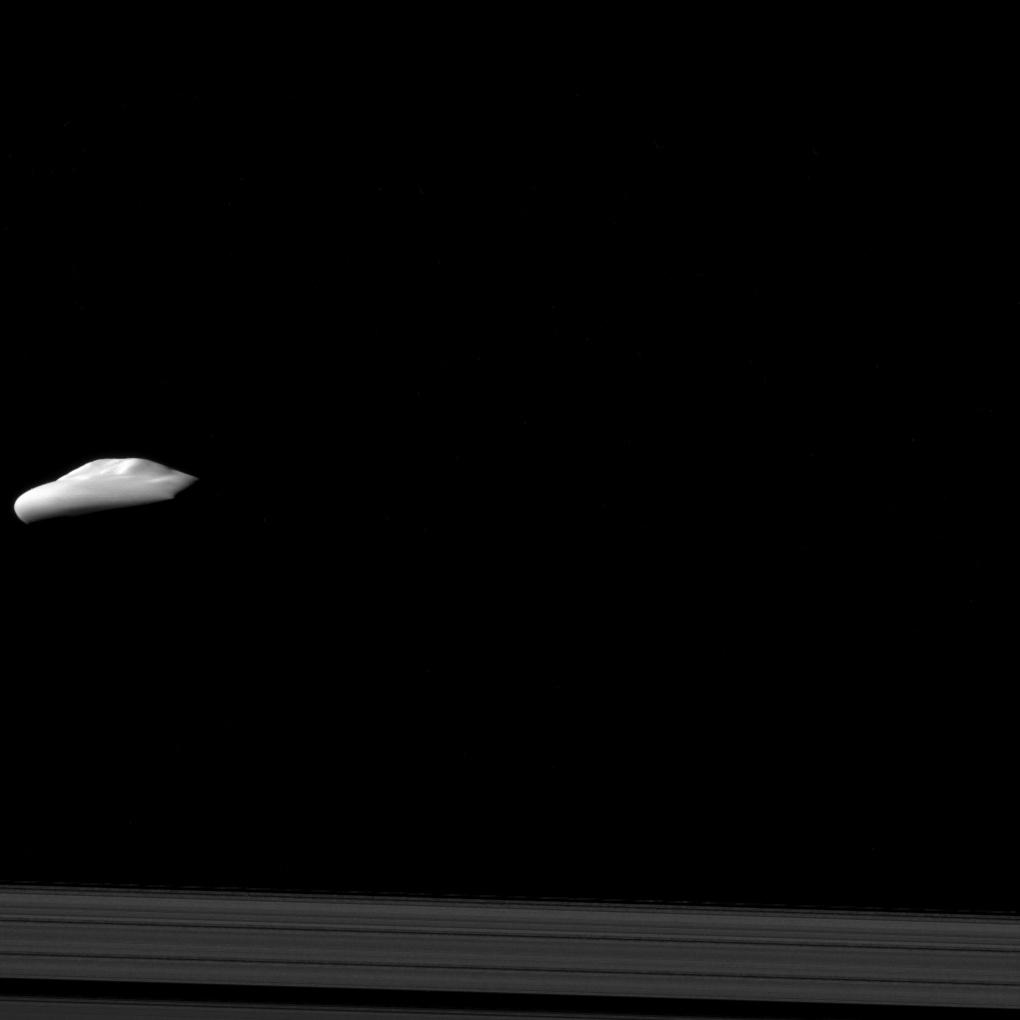Atlas Escaping

| PIA Number | PIA17206 |
|---|---|
| Language |
|
NASA's Cassini spacecraft captured this view of Saturn's moon Atlas (30 kilometers, or 19 miles across), with its smooth equatorial ridge, during a moderately close flyby on Dec. 6, 2015. The view offers one of Cassini's best glimpses of Atlas, along with images seen in Saturn's Saucer Moons.
This view looks toward the anti-Saturn side of Atlas. North on Atlas is up. The image was taken in visible light with the Cassini spacecraft narrow-angle camera.
The view was acquired at a distance of approximately 20,000 miles (32,000 kilometers) from Atlas and at a Sun-Atlas-spacecraft, or phase, angle of 83 degrees. Image scale is 620 feet (190 meters) per pixel.
Atlas orbits Saturn in a region called the Roche Division, between the planet's A and F rings, at the outer edge of the main ring system. The outer A ring is seen at the bottom of this view.
The Cassini mission is a cooperative project of NASA, ESA (the European Space Agency) and the Italian Space Agency. The Jet Propulsion Laboratory, a division of the California Institute of Technology in Pasadena, manages the mission for NASA's Science Mission Directorate, Washington. The Cassini orbiter and its two onboard cameras were designed, developed and assembled at JPL. The imaging operations center is based at the Space Science Institute in Boulder, Colorado.
For more information about the Cassini-Huygens mission visit http://saturn.jpl.nasa.gov and http://www.nasa.gov/cassini. The Cassini imaging team homepage is at http://ciclops.org.
Credit:NASA/JPL-Caltech/Space Science Institute
